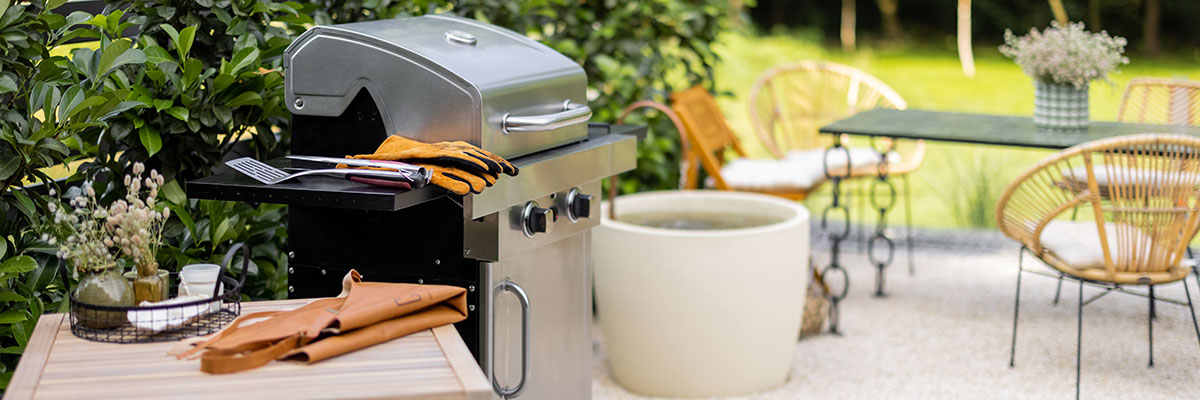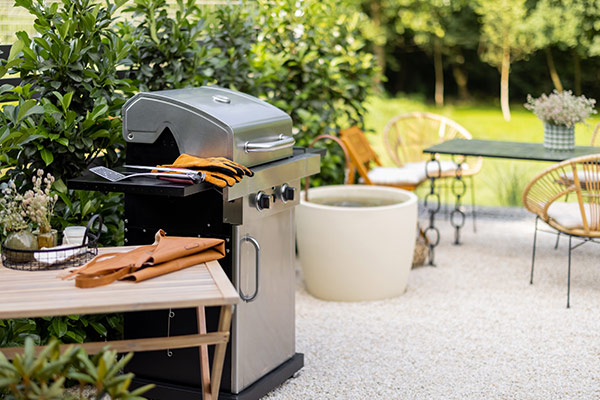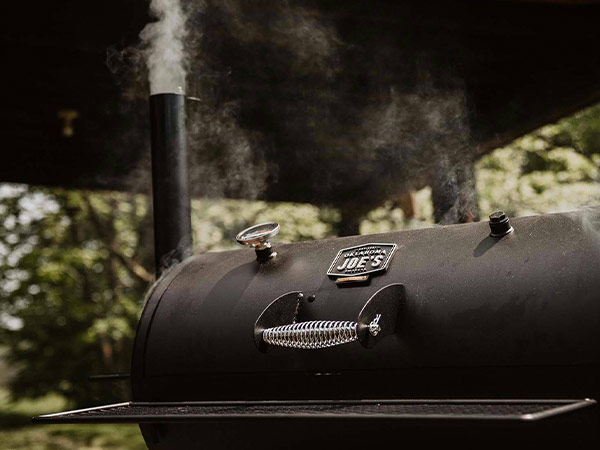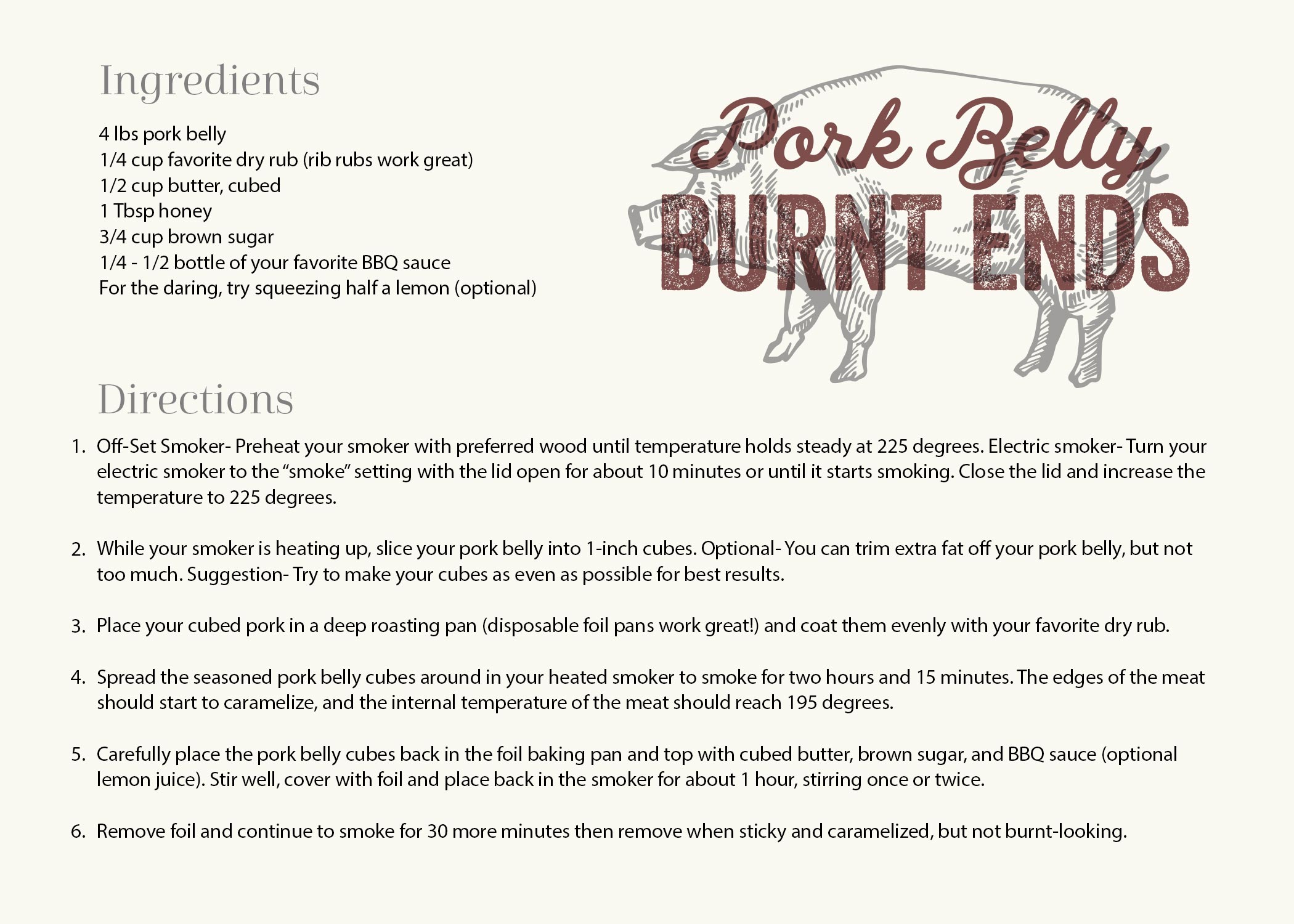

Is Your Outdoor BBQ Area Ready to Grill?
A great outdoor BBQ area starts with a prime place to grill up some tasty food and spend some time with your friends and family. To keep everyone happy, you want to make sure you have the right BBQ setup for your gatherings. We’ll break down the key points to keep in mind, from what BBQ is right for your needs and what type of surface you need to plan when building a grill area.

Your Grill: The Star of the Show

Whether you’re picking out your first grill, upgrading your BBQ area with a new grill, or adding a companion to your existing setup, you want to consider what kind of BBQ grill fits your needs the best.
- Charcoal grills: Any grill that uses charcoal as its source of heat can be called a “charcoal grill,” but they’re not all made the same. You might recognize the iconic shape of a “charcoal kettle grill” from a distance or you may have used a small “hibachi” grill as a tailgate grilling solution. These grills, in a variety of sizes, burn compressed charcoal briquettes.
- Pellet grills: A grill that uses small, compressed wood pellets, sometimes manually fed, and sometimes fed through an automatic system, can be used as a BBQ or as a smoker. Chefs can use particular types of pellets to impart specialized flavors into what they’re cooking by selecting different pellet woods. Mostly electric, pellet grills will require an outdoor outlet as a power source.
- Ceramic grills: Sometimes referred to as a “Kamado” grill or Egg (due to its egg-shape). A ceramic grill can offer all day insulated cooking, due to their thick, heavy ceramic walls (which also make them extremely heavy, and not one you’ll be popping in the truck for a tailgate). BBQers who enjoy using hardwood charcoal (instead of manufactured briquettes) may be drawn to this style of BBQ. A ceramic grill can be used as a smoker due to its heat-trapping design.
- Natural Gas grills: If you prefer turning a switch to light up your grill, then a gas grill may be a great pick. Natural gas grills are installed to a natural gas line to provide a constant source of heat energy. Gas grills frequently come with many different cooking zones, offering options for direct or indirect cooking simply by adjusting certain burners on/off or high or low. They also offer the convenience that can make weeknight grilling a breeze, with a short amount of preheating time. Some come with extra bells and whistles such as attachable smoker boxes, a flat griddle area, warming zones, and more. Electric grills offer similar weeknight ease, as they simply need to be plugged in to an electrical outlet and can even be used inside.
- Propane Gas grills: Propane gas grills are like natural gas as they make weeknight grilling easy with minimal preheating. However, these grills use portable liquid propane gas tanks to supply their energy. These tanks make it easier to move your grill around since they are not permanently installed like the natural gas line. Both types of gas grills have their own unique advantages, and which one is better depends on your lifestyle.
- Smokers: A dedicated smoker makes a great companion for your existing grill. While you can set up most grills as smokers with the aid of a pan of soaked wood chips (check out this helpful How To for this method from Weber), a dedicated smoker is designed to use smoke for an indirect heat source as its primary function. Smoking meat happens at low temperatures over longer periods of time than direct grilling. While a grilled piece of chicken may take minutes, smoking a whole chicken may take hours (but the wait will be worth it!). Typically, smokers are cylinder, barrel, or rectangular shaped, and offer various levels for placing or hanging meat, sometimes using a water pan (to regulate heat). Smokers offer various fuel options such as hardwood charcoal, pellets, or even logs for big “whole hog” setups that may require serious muscle to move. Smokers can also come in “cabinet” style electrical options which will need a power source such as an outdoor outlet relatively nearby.
Great Grilling Accessories
Having the best grill setup often means being prepared for any condition with tools at the ready. Besides the obvious BBQ tools, such as long-handled metal burger flippers, tongs, or forks, there are additional grilling accessories you should consider.
Safety gear for grilling includes what your grill stands on as well as what it’s placed nearby. Fireproof grill mats are practical under big grills that aren’t getting moved around much. They protect your patio or yard from errant sparks, as well as hard to clean drips from your meals. You also should consider what structure(s) your grill will be beside. Electric-powered grills and smokers need to be closer to outlets than those that are self-powered. Will you be filling your bedroom windows with that smoke while your brisket cooks? Setting off the smoke alarm isn’t the best way to start a meal.
It’s always smart to have firefighting tools nearby, such as a fire extinguisher and a spray bottle of water (to spray down hot coals causing flare-ups). You also should be in the habit of cleaning your grill before and after cooking and making sure all the fire is out and the burners off before you walk away from the grill for the night.
How to Get your Flame Going
Your grill type may dictate the types of heat sources you’re limited to, such as charcoal, hardwood, or pellets. Lighting your fuel source may be as easy as flipping a switch (such as with propane grills) or you may need to try some methods of charcoal lighting, such as using a “charcoal chimney” or stacking briquettes and lighting them using lighter fluid or twists of newspaper.
![]()
![]() Note: If you do opt for lighter fluid, be careful! It’s the number one cause of grill-related injury.
Note: If you do opt for lighter fluid, be careful! It’s the number one cause of grill-related injury.
Other considerations include flavors of hardwood (such as apple, cherry, mesquite, and hickory) – often dictated by the type of meat you’re cooking. Check recipes, or simply go through some delicious trial and error to decide on your favorites. Automatic pellet BBQ uses hardwood as well, but in a pelletized form.
Set Up the Perfect Grilling Area
Your grill type may determine where it needs to reside, or your habits may lead you to create the ultimate grill space. Do you plan to host large gatherings where food is king? Maybe you need to build a deck or patio area around several large grill spaces with a large table in the middle for your family and friends. You could consider grilling away from your house, say in a corner of your yard, especially if you’re going to run a smoker every weekend.
Think also about your lighting plan. All-day projects may also need to start in those darker hours of the morning or go late into the night, creating a need for great lighting around your setup. If you’re grilling near a backyard pool, be careful to plan plenty of safety spaces, so you won’t be squeezing by a hot grill beside a slick pool deck.
McCoy's BBQ Recipe


Ingredients:
- 4 lbs pork belly
- 1/4 cup of your favorite dry rub (rib rubs work great)
- 1/2 cup butter, cubed
- 1 tbsp honey
- 3/4 cup brown sugar
- 1/4 - 1/2 bottle of your favorite BBQ sauce
Directions:
- Off-Set Smoker- Preheat your smoker with preferred wood until temperature holds steady at 225 degrees. Electric smoker- Turn your electric smoker to the “smoke” setting with the lid open for about 10 minutes or until it starts smoking. Close the lid and increase the temperature to 225 degrees.
- While your smoker is heating up, slice your pork belly into 1-inch cubes. Optional- You can trim extra fat off your pork belly, but not too much. Suggestion- Try to make your cubes as even as possible for best results.
- Place your cubed pork in a deep roasting pan (disposable foil pans work great!) and coat them evenly with your favorite dry rub.
- Spread the seasoned pork belly cubes around in your heated smoker to smoke for two hours and 15 minutes. The edges of the meat should start to caramelize, and the internal temperature of the meat should reach 195 degrees.
- Carefully place the pork belly cubes back in the foil baking pan and top with cubed butter, brown sugar, and BBQ sauce. Stir well, cover with foil, and place them back in the smoker for about 1 hour, stirring once or twice.
- Remove foil and continue to smoke for 30 more minutes then remove when sticky and caramelized, but not burnt-looking. Enjoy with your other BBQ favorites!
McCoy's Has What You Need For A Backyard Upgrade
No matter your backyard grilling needs, McCoy’s is here to help you set up the perfect BBQ oasis. We have experts who can advise on safe materials to build a patio, create shade around a comfy outdoor eating area, or just put together the perfect grilling spot with new outdoor furniture. Check out the new items we’re adding online, as well as what we have in the McCoy’s location that’s closest to your backyard.
